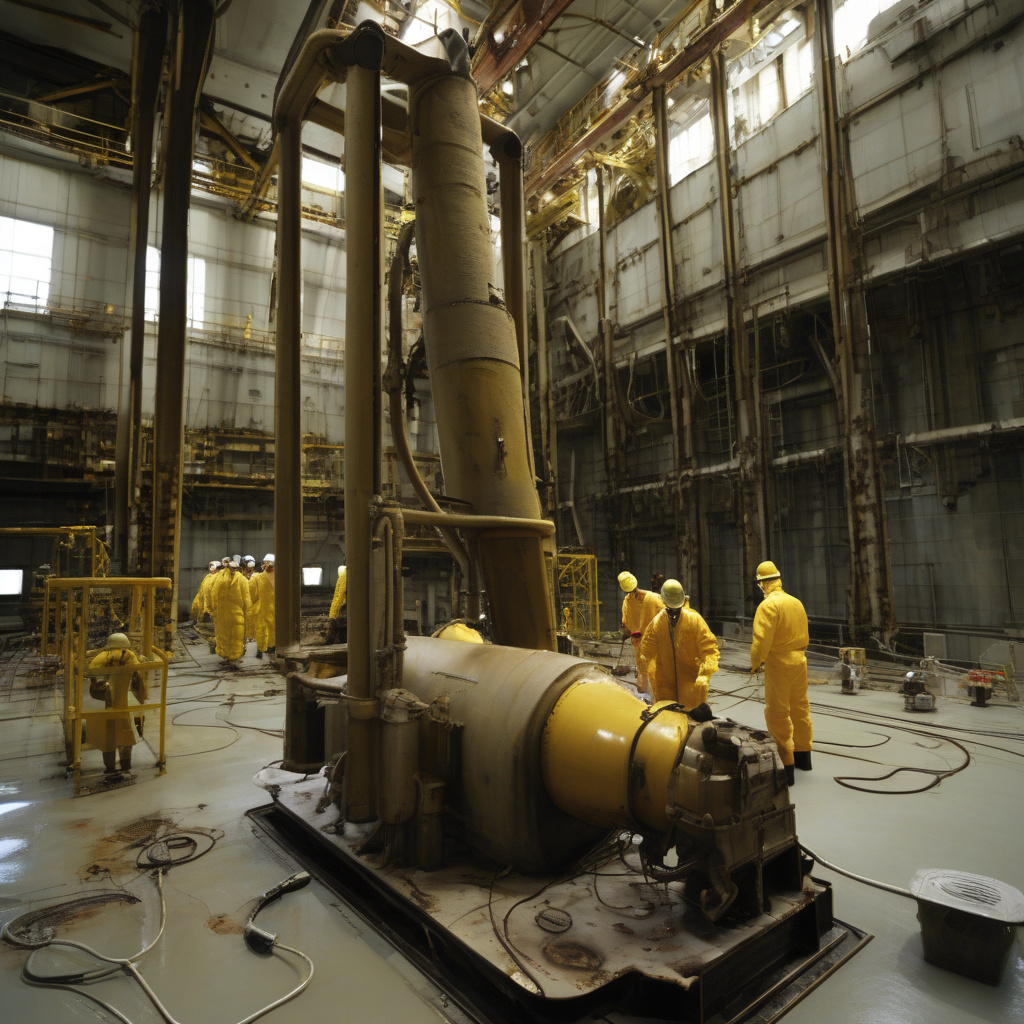72-foot Nuclear ‘Fishing Rod’ Extracts Melted Radioactive Fuel Sample from Fukushima
The second sample of melted nuclear fuel has been retrieved from the crippled Fukushima reactor, marking a significant milestone in the challenging decommissioning process after the catastrophic 2011 meltdown. The innovative tool responsible for this remarkable feat is a 72-foot long device often referred to as a “fishing rod,” designed to extract highly radioactive materials from the heart of the reactor.
Developed by the International Research Institute for Nuclear Decommissioning (IRID), this cutting-edge technology represents a groundbreaking approach to tackling one of the most pressing issues in nuclear cleanup history. The “fishing rod” operates by remotely guiding a probe equipped with a camera and a specially designed gripping mechanism to locate, grasp, and remove samples of the molten fuel debris that reside deep within the reactor’s core.
The successful retrieval of the second fuel sample not only demonstrates the effectiveness of this advanced tool but also provides crucial insights into the condition of the reactor and the behavior of the melted fuel. By analyzing these samples, scientists and engineers can better understand the extent of the damage, assess the risks involved in the decommissioning process, and develop strategies to safely and efficiently remove the remaining fuel debris.
One of the key advantages of the “fishing rod” technology is its ability to minimize human exposure to high levels of radiation. The remote operation of the device allows workers to conduct delicate and hazardous tasks from a safe distance, reducing the health risks associated with handling radioactive materials. This not only ensures the safety of the workers involved but also enables the decommissioning efforts to progress more swiftly and efficiently.
Furthermore, the successful extraction of the fuel samples paves the way for the next phase of the decommissioning process, which involves the removal of the remaining fuel debris from the reactor. This challenging task requires innovative solutions and precise engineering to overcome the complex and hazardous conditions inside the damaged facility. The data obtained from the retrieved samples will be instrumental in guiding these future operations and ensuring that the decommissioning proceeds according to plan.
The use of the “fishing rod” technology at the Fukushima site represents a significant step forward in the field of nuclear decommissioning and cleanup. By harnessing the power of innovation and technology, experts have been able to overcome seemingly insurmountable challenges and make progress towards resolving one of the most devastating nuclear disasters in history. As efforts continue to safely and effectively decommission the Fukushima reactor, the lessons learned from this experience will undoubtedly shape the future of nuclear cleanup projects around the world.
In conclusion, the successful extraction of the melted fuel sample using the 72-foot “fishing rod” technology marks a crucial achievement in the ongoing decommissioning efforts at the Fukushima site. This groundbreaking approach not only demonstrates the power of innovation and engineering in addressing complex nuclear challenges but also provides valuable insights that will inform future cleanup projects. As the world continues to grapple with the legacy of nuclear disasters, the advancements made at Fukushima serve as a beacon of hope for a safer and more sustainable nuclear future.
Fukushima, Nuclear Decommissioning, Radioactive Fuel, Innovative Technology, Cleanup Efforts












